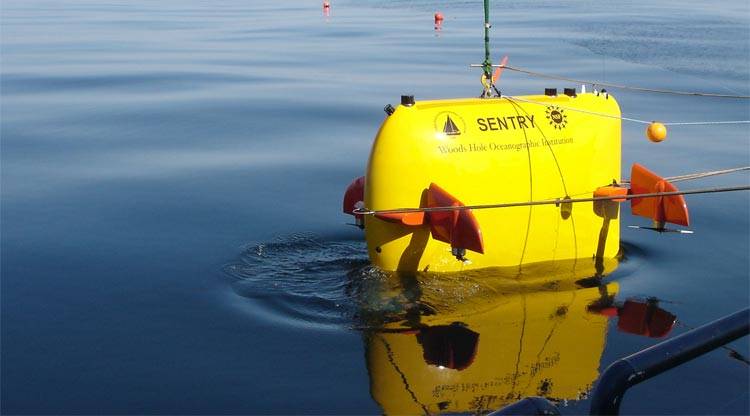Is it embarrassing to pick up a blog I haven't used for 15 months? I'm going to go with no. While a lot has changed since I last posted on here - I spent a year as editor in chief of NUScience Magazine, reached the halfway point of my undergraduate education, and spent six months working full time in the Corporate Communications department at Vertex Pharmaceuticals - my end goal hasn't really wavered at all. I'm still excited about becoming a science journalist, and am pursuing any and all opportunities I can to further that dream.
For the next six months or so, that pursuit will take the form of an internship at the Woods Hole Oceanographic Institution (WHOI, pronounced "who-y"). I'll be living in Cape Cod and working full time as a Science Writing Intern in the communications department of this incredible research institution. The first couple of days have been pretty quiet, but I've already started to dive in to the world of oceanography and marine science.
From what I've seen so far, both the researchers and communicators here already have a grasp on what I prioritize most in science writing, which is presenting complex information in a clear and interesting way. On my first day, I attended a meeting entitled, "Challenges and Opportunities for Robotics and Automation Applied to Aquaculture." Other than the extended essay I wrote in high school that focused on the pros and cons of genetically modified salmon, aquaculture is a topic that before Monday, I knew little about, and my knowledge of automative technology was even more poor. I was pleased and surprised to find that the information that was presented in a way that even someone who had minimal knowledge of the basic concepts could understand. Just for fun, here are a few of the cool facts I learned about aquaculture during my half-day immersion:
- Aquaculture is one potential solution to the population problem. The world population may exceed nine billion before the year 2050, and humans may consume at least 40 million tons of seafood per year by that point. Much of our fish is farmed already, but the aquaculture industry is likely to expand to meet that growing need.
- Fish farming is one of the most environmentally efficient ways to make animal protein. This means that concerns over increased greenhouse gas emissions may steer us toward more aquaculture in the future.
 |
| This graph shows the efficiency of farming fish compared to other animal protein (figure courtesy of globalaginvesting.com). |
- Most of the population views seafood as healthy but expensive. As a result, seafood is purchased more often when people are feeling wealthy, but people gravitate toward cheaper options of chicken and steak when they feel they can't fund a seafood diet. Currently, human seafood consumption is increasing.
- Most aquaculture today is done close to shore, but there are plenty of advantages to open ocean fish farming, including better water quality. However, logistical problems and a rougher environment have prevented major expansion of open ocean aquaculture thus far.
 |
| An example of what an open water fish farm - this one is known as the Aquapod - looks like (image courtesy of atlasofthefuture.org). |
- Innovation in robotics technology may provide a solution for the above problem. Automation is already used for activities like feeding and cleaning, but as the technology develops, the possibilities for improvement are essentially endless. The use of Remote Operated Vehicles (ROVs) and Autonomous Underwater Vehicles (AUVs) could allow aquaculture technology to expand significantly.
 |
| An example of an AUV used at WHOI (image courtesy of Chris German). |
- While salmon/cod aquaculture is accomplished through large cages or enclosures, mussels are captured solely through the use of frayed ropes. The mussels stick to the ropes and are later placed inside mesh tubes - sort of like a cotton sock. The sock eventually disintegrates in the water, and within a couple of years, the mussels are ready for harvesting.
 |
| An example of mussel farming - the mesh covering is the "cotton sock" referred to above (image courtesy of romplastica.net). |
- The biggest threat for mussel farmers is predation from ducks, who approach the ropes and can swallow the mussels whole. Automative technology that involves a combination of light and sound is being explored to scare the ducks away from their prey.
 |
| This duck has a mouthful of zebra mussels (image courtesy of David Stimac)! |
- Robotics technology is also used to target harmful algal blooms (HABs), which are the main cause of many forms of shellfish poisoning. Forecasting technology allows researchers to track the distribution of the resting cysts that lead to contamination in sensitive areas.
I'm amazed by how much I learned in just one day, and overwhelmed by the variety of science that goes on here. Good thing I have six months to take it all in. Here's to a few great months of reading writing, and learning in an exciting new place.
Sources for this article: Presentations by Hauke Kite-Powell, David Kelly, Scott Lindell, Dana Yoerger, and Donald Anderson. See above for image sources.





No comments:
Post a Comment